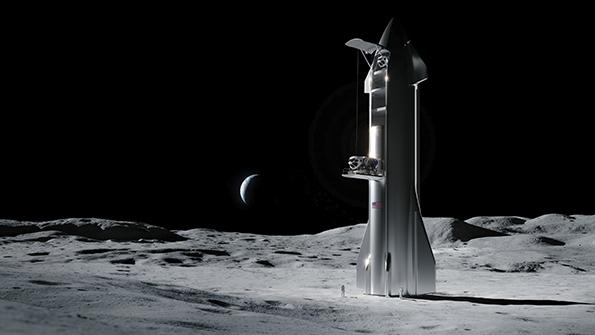
In an effort to restore competition, NASA plans to provide funds to support development and flight tests of a second human lunar landing system, even as the agency steps up its commitment with its current contractor, SpaceX.
The new program, known as Human Landing System (HLS) Sustaining Lunar Development (SLD), would parallel a SpaceX initiative that began last year with the goal of landing astronauts on the surface of the Moon as early as 2025.
Along with bringing in a new HLS provider, NASA intends to exercise an option in SpaceX’s contract to conduct a second crewed landing later this decade.
“Additional landers will help increase the cadence of the missions in which we’re able to land astronauts on the surface of the Moon,” NASA Administrator Bill Nelson told reporters on March 23. “Competition is the key to our success.”
Funding for both initiatives is included in the Biden administration’s proposed fiscal 2023 budget, which requests $26 billion for NASA overall and $1.5 billion for its HLS programs.
NASA is counting on public-private partnerships to develop and operate transportation systems to fly astronauts from an Orion spacecraft or the planned Gateway outpost in lunar orbit to and from the surface of the Moon.
Lacking funds to select more than one provider, NASA last year made a sole award to SpaceX for $2.9 billion, which covers an uncrewed demonstration flight, slated for 2024, and a crewed landing on the Artemis III mission, currently targeted for mid-2025.
Under the new SLD program, NASA intends to select a second provider for uncrewed and crewed demonstration flights. That decision would be followed by commercial flight service contracts awarded to either or both SpaceX and the new entrant. Funding breakdowns for the programs were not released.
Contracts with SpaceX and a second lunar transportation provider will include stipulations that enable NASA to drop the procurement if it does not receive adequate funding or if “someone is not progressing,” says Jim Free, NASA associate administrator for exploration systems development.
“We’re not buying both landers at the same time,” he says. “This is a progressive buildup.”
In addition to SpaceX, NASA received initial HLS proposals from teams led by Blue Origin, Dynetics, Boeing and Vivace.






Comments